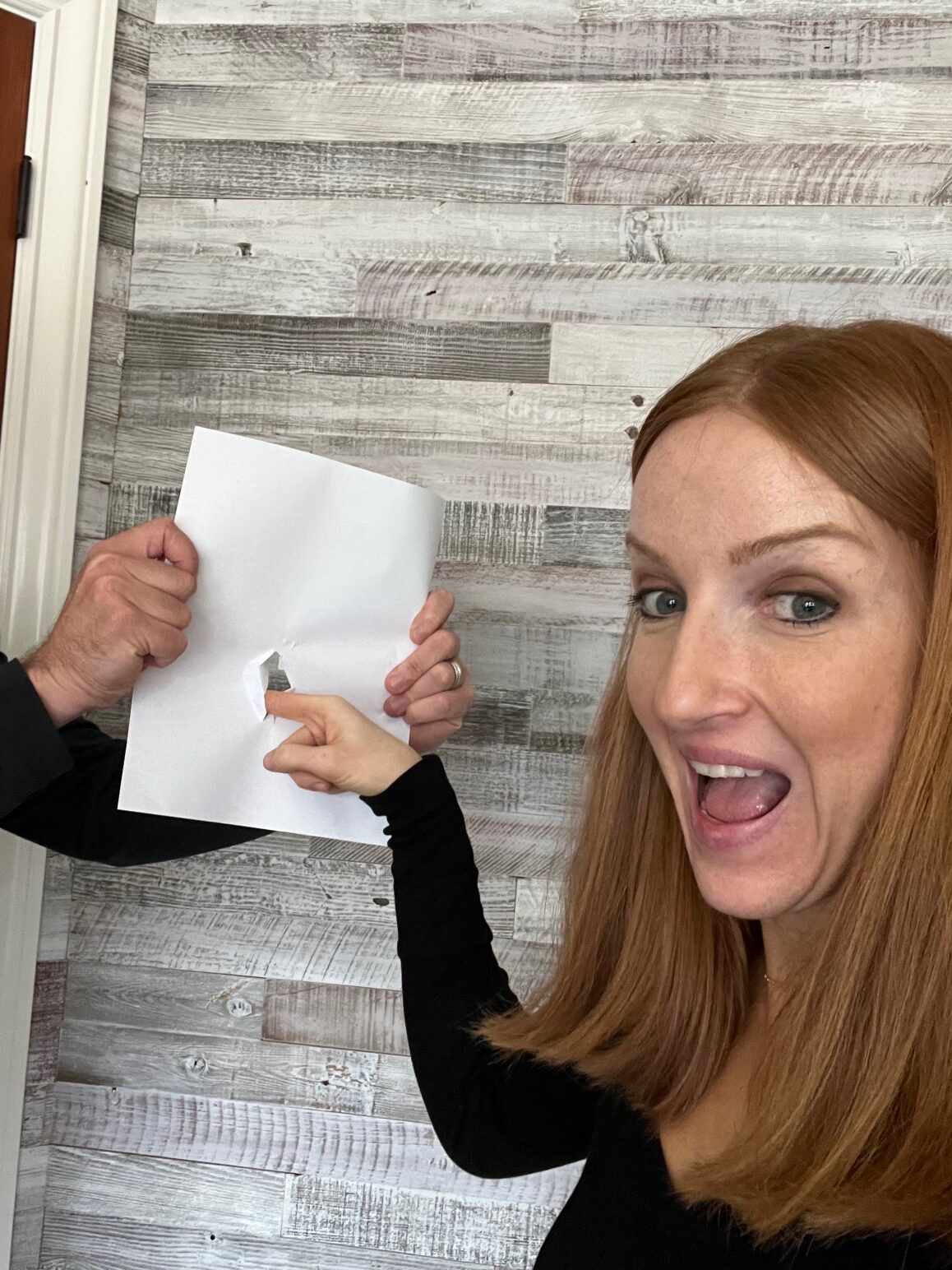Just before the new year, I wrote a post about marketing your new initiatives before you’re ready. If you haven’t gotten a chance to take a look at that, please do, because today I am going to talk about an exercise to build clarity about exactly what you are marketing.
In 2022, it’s more important than ever before to make marketing messages clear, concise, and targeted. We know that the digital space is crowded and growing. For a brand to reach a consumer in a way that’s memorable, specificity is the only way. After all, picture this…
Let’s say that someone holds a blank piece of 8.5” x 11” paper in front of you and asks you to create a hole in it. Let’s also say that this paper represents the audience that you are trying to reach and that you can’t use anything but your hands to get through it. Some people might try to break that paper by using a flat hand and giving it a high five of sorts. This would likely push the paper forward but may not break the paper. As step two, some people might then try to break it with a fist. This might do the job, but it’s still likely that it simply moves the paper forward. In the end, the people who take one finger and confidently puncture a hole in the paper are going to get through to their audience.
So how do we make your marketing this targeted?
Jill Avery and Sunil Gupta of Harvard Business School recommend (and I agree) that you ask yourself three questions:
- What is the value? (Economic value, functional value, experiential value, and/or social value.)
- The three W’s. For who, when and where?
- Why and how? (Reason to believe.)
Once you have the answers to those questions, make a statement:
“For (answer to #2), (your brand, product, or service) is the only (product or service) that offers (answer to #1) by/with (answer to #3).”
To bring this to life, let’s use the example of a coffee shop opening an additional location.
Let’s call the coffee shop “Best Beans Coffee.” And let’s say this shop caters to those who want an array of options regarding types of milk, styles, etc. Let’s also say that this coffee shop is unique because it offers flights of coffee that you can taste, paired with various local pastries and chocolates. Customers go to this coffee shop for both the variety of options and experience of tasting high-end coffee and other local goods. This is the answer to #1.
Let’s say that this concept has really taken off among coffee aficionados and foodies who are looking for new culinary experiences. This coffee shop is visited frequently by locals because the flights change, but it also attracts regional visitors. For purposes of this hypothetical exercise, I am going to say this coffee shop is in the town in which I grew up, which is Morgan Hill, CA. However, regional visitors tend to come from San Jose, which is why the owner is opening an additional location there. This is the answer to #2.
The reason this coffee shop is so successful is because it’s the only coffee shop in the region that offers this type of coffee tasting experience. In fact, it trademarked its name and some of its signature flights to protect its novel concept. This is the answer to #3.
Now let’s put all of this into one sentence:
For coffee aficionados, foodies, and their friends, Best Beans Coffee is the only coffee shop in the South Bay that offers a delightful culinary experience with its trademarked coffee tasting flights paired with carefully sourced local pastries and chocolates.
With a guiding statement like that, how can you not break that piece of paper and reach your target audience?
If specificity sounds scary (is a little voice asking you, “But what if someone who otherwise would be a customer counts themselves out because they are not a foodie?”) I understand. It’s tough to take a stand. But in marketing, not only does it help you reach your ideal customers better, it creates a scarcity effect among secondary audiences. Rather than counting themselves out, a non-coffee aficionado might think, “Maybe I don’t love coffee that much but I like it enough and want to see what this delightful experience is all about.” And eventually, you can make a statement for that segment too, and you can vary your marketing messages between segments. Initially, though, if you talk to everyone, you talk to no one. Remember… you want to break that paper.











